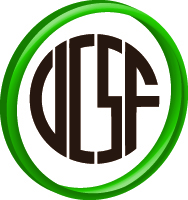Team:UCSF/Project
From 2009.igem.org
(→Approach) |
(→Results: what we did) |
||
| Line 53: | Line 53: | ||
=== Results: what we did === | === Results: what we did === | ||
| + | Over the summer we assembled more than 100 fusions of localization and catalytic domains and screened whether they work. How? We measured the effect our constructs have on motility of Dictyostelium cells: stronger polarity should make cells faster while weaker polarity ought to slow them down! | ||
| + | |||
| + | Here | ||
| + | {linkpicture’ScreeningMatrix’}DONE (caption in the link: If you are interested what all the elements are check out our biobricks. We identified 7 brakes (red) and 1 accelerator (green): | ||
| + | Brakes: | ||
| + | HO239: PTEN-PI3K1(-N) | ||
| + | HO236: PTEN-SHIP1 | ||
| + | HO230: PTEN-RasCda | ||
| + | HO266: PTEN-NFA | ||
| + | HO199: PLC-PH-SHIP1 | ||
| + | HO168: ACA-SHIP1 | ||
| + | HO158:ACA-RasGda | ||
=== Summary and outlook === | === Summary and outlook === | ||
Revision as of 23:51, 16 October 2009
| You can write a background of your team here. Give us a background of your team, the members, etc. Or tell us more about something of your choosing. | |
|
Tell us more about your project. Give us background. Use this is the abstract of your project. Be descriptive but concise (1-2 paragraphs) | |
| Team Example 2 |
| Home | The Team | The Project | Parts Submitted to the Registry | Our summer experience | Notebook | Human Practices |
|---|
(Or you can choose different headings. But you must have a team page, a project page, and a notebook page.)
Contents |
Overall project
Your abstract
Part 1:
Part 2:
Part 3: Speed engineering accelerators and brakes: A cellular cruise control by modulating cell polarity with feedback loops
Motivation: Why is this useful?
Just like we have control over speed in a car – we can brake or accelerate – it would be useful to engineer such behavior into our cellular nanorobots. Just think about it: We could speed cells up to reach their targets faster and stop them once they have arrived or do not behave properly.
Background
For these experiments we chose Dictyostelium cells to test our prototypical brakes and accelerators quickly. We expect that our brakes and accelerators can be used in a plug and play fashion because Dictyostelium’s way of movement is very similar to a neutrophil’s:
When a receptor binds chemoattractant, it induces the conversion of PIP2 to PIP3 (two signaling lipids in the plasma membrane) at the front of our cells. In a positive feedback loop PIP3 triggers the formation of more PIP3 at the front while similarly PIP2 leads to more PIP2 production at the sides and rear of the cell. This system sets the axis of polarity of the cell. The PIP3 patch at the front functions as a ‘turbo boost’ pushing the cell forward.
Approach
Inspired by nature we tried to build accelerators and brakes by introducing our own synthetic protein based feedback loops. We designed feedback elements by fusing localization and catalytic domains involved in PIP3 production and degradation to modulate localization and level of PIP3 and PIP2 in the cell.
Here is an example of a positive feedback loop: a PIP3 binding localization domain fused to a PIP3 producing catalytic domain could produce more PIP3 where there is already PIP3- at the front. This might strengthen polarity and accelerate a cell.
Results: what we did
Over the summer we assembled more than 100 fusions of localization and catalytic domains and screened whether they work. How? We measured the effect our constructs have on motility of Dictyostelium cells: stronger polarity should make cells faster while weaker polarity ought to slow them down!
Here {linkpicture’ScreeningMatrix’}DONE (caption in the link: If you are interested what all the elements are check out our biobricks. We identified 7 brakes (red) and 1 accelerator (green): Brakes: HO239: PTEN-PI3K1(-N) HO236: PTEN-SHIP1 HO230: PTEN-RasCda HO266: PTEN-NFA HO199: PLC-PH-SHIP1 HO168: ACA-SHIP1 HO158:ACA-RasGda
 "
"

